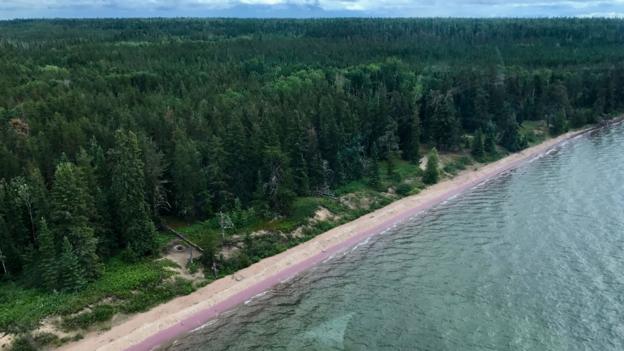Europe suffered an unusually hot summer in 2019. Seven weather stations in Spain recorded their highest temperatures ever in June, and higher-than-average temperatures and drought were registered across the country in July and August. However, the scorching weather conditions revealed an unexpected sight in the Spanish province of Cáceres: as the drought caused the shoreline of the Tagus River to recede, a 4,000- to 7,000-year-old circular monument emerged in the middle of the Valdecañas Reservoir.
Known as the Dolmen of Guadalperal or the “Spanish Stonehenge”, the megalithic monument consists of more than 100 standing granite stones, some up to 1.8m tall, arranged in a 26m-diameter circle. It was likely used as a temple, a burial site and even as a trading spot due to its strategic original location on the banks of the river, and archaeologists believe it was later ransacked by the Romans.
In the 1920s, German researcher Hugo Obermaier led an excavation of the site and took some items to be studied and exhibited in Berlin. His studies, however, were not published until 1960. Three years later, the area was flooded by the construction of the Valdecañas Reservoir, a project to bring water and electricity to less developed parts of the region.
The megalithic tombs were submerged in the process. The tips of the tallest stones would sometimes appear as the water levels went down in the summer, but the 2019 drought was the first time the “treasure of Guadalperal” – as the dolmen is commonly referred to – became fully visible in almost 60 years.
Its appearance attracted tourists and brought up some concerns. With no surveillance around the dolmen, visitors were left free to touch and potentially damage the megaliths. After decades underwater, the porous granite stones have started to erode; some have cracked and others have even fallen over. This led a group of residents from Peraleda de la Mata, the town where the monument is located, to urge the Spanish government to move the rocks to a safer place to be preserved and studied.
They created an online petition to save the monument, which has attracted more than 44,000 signatures. But the Spanish ministries of Culture and Sport and Ecological Transition, along with a group from the University of Extremadura, considered the transportation of the megaliths potentially damaging to the dolmen.
There is currently an effort to declare the dolmen as an Asset of Cultural Interest, the maximum protection a monument can have in Spain. With the return of rain last autumn, the Valdecañas water levels went back to normal and, despite all efforts, the treasure of Guadalperal is back underwater for now.
(Video by Jocelyn Brent; text by Luana Harumi)
This video is part of BBC Reel’s Remote Places playlist.
Join more than three million BBC Travel fans by liking us on Facebook, or follow us on Twitter and Instagram.
If you liked this story, sign up for the weekly bbc.com features newsletter called “The Essential List”. A handpicked selection of stories from BBC Future, Culture, Worklife and Travel, delivered to your inbox every Friday.



























